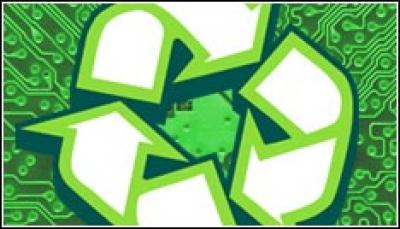EPA Launches Server Energy Star Label

CTOs and data centre managers can use the new label to evaluate brands of servers in energy-efficient and enviromentally friendly data centres
After more than two years of work that started in Santa Clara, Calif., in February 2007, the US Environmental Protection Agency on 15 May officially sanctioned and made public specifications that will determine whether a piece of server hardware qualifies to carry the EPA’s well-known blue-and-white Energy Star label.
Starting today, CTOs and data centre managers evaluating various brands of servers for purchase will have another important factor to consider: whether or not the server has passed the qualifications to wear the EPA’s Energy Star label as being energy-efficient and enviromentally friendly.
The new draft specification for servers specifies three main criteria to earn the label: accurate power-supply management capabilities, virtualisation functionality, and energy-efficiency benchmarks and standards for measuring and reporting energy use.
Systems makers Dell, IBM, Hewlett-Packard, Sun Microsystems, Pillar Data Systems, BlueArc, Rackable, and Fujitsu—among others—already are producing servers with reduced power draw, virtualisation capability, and cooler-running processors that are expected to pass the new specifications to earn the Energy Star label.
The new specifications do not pertain to blade servers, which will be included in a separate initiative. The Energy Star program decided to separate standard x86-type servers from the denser, more powerful and hotter-running blades due to industry doubts about the accuracy of the metric used to measure server energy use when the machines are idle.
Andrew Fanara, director of the Energy Star Product Specifications Development Team, said in a letter to IT systems makers last month that the EPA will continue to work on developing an appropriate test method for measuring blade system idle power.
Storage array energy-usage specifications are next up on the EPA’s agenda. That process will start immediately but isn’t expected to be completed until the end of the year, at the earliest. Details on the storage specification development process will be released in the next few weeks.
Fanara, who has been on the road for most of the last two years drumming up support for this initiative, is the man behind getting the multinational industry together on the same page for this result. eWEEK published a Q&A with Fanara about the goals of the Energy Star program in October 2007.
The Energy Star label initiative has proved highly successful for sales of desktop and laptop computers, refrigerators, clothes dryers and a number of other household appliances, because it increases customer awareness of energy efficiency.
Public awareness of the Energy Star label is strong, reaching more than 75 percent of U.S. households, according to a recent nationwide survey. Last year, more than 35 percent of U.S. households sought out an Energy Star-labeled product to purchase, with 80 percent of buyers reporting they are likely to recommend those products to others.
Climbing power and cooling costs have become key issues for companies trying to rein in data centre expenses.
Despite increased awareness of energy savings, overall power consumption continues to rise, due largely to the sheer number of servers being put into production.
Fanara said that open-systems volume servers “are probably the least efficient in terms of power consumption, and are the easiest to convert or replace than other servers.”
Those inefficient and prolific servers are in large part responsible for the stunning fact that servers and supporting infrastructure represent 1.5 percent of all electricity used in the United States, a figure that has doubled from 2000-2005 and is expected to double again by 2011, Fanara said.
“Over the next few years, power failures and supply limitations will halt operations at some point in 90 percent of all data center operations. Right now, half of all data centers have insufficient power supplies,” Fanara told eWEEK